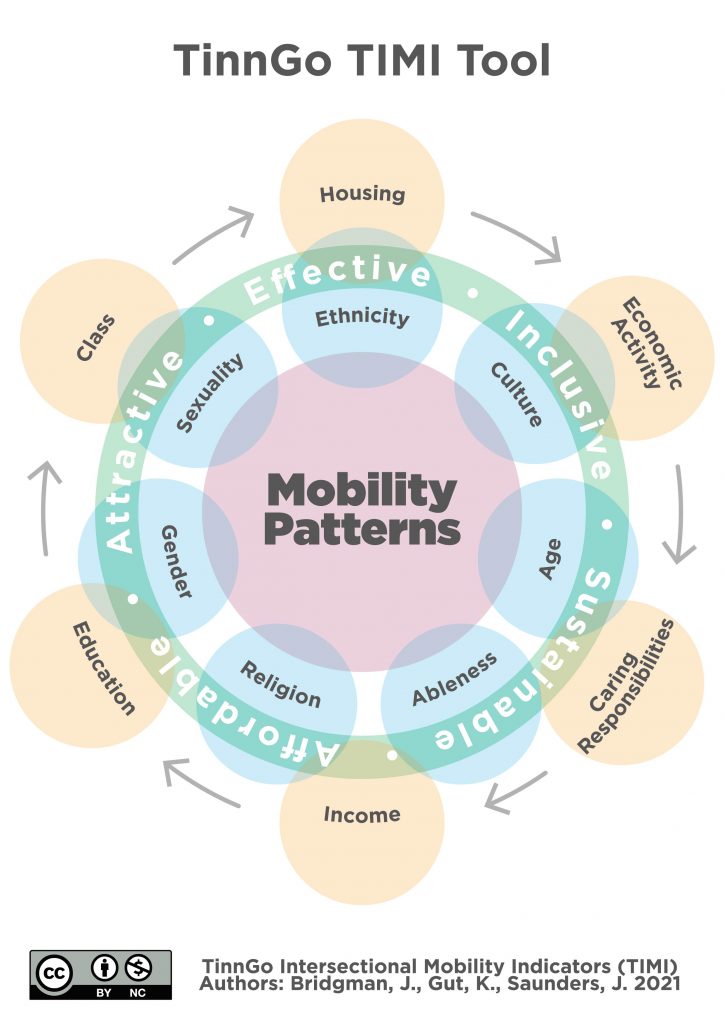TinnGo Intersectional Mobility Indicators (TIMI)
TIMI is a set of intersectional mobility indicators we have developed to enable transport policy makers and practitioners visualise the overlapping (intersectional) nature of individual characteristics and structural aspects of transport poverty, and how they relate to smart mobility and mobility patterns. The origins of the tool came from the principle that transport is the glue that holds many facets of everyday life together. Where you live, work, go to school, shop or socialise is influenced by transport. Unequal access to transport is a major contributory factor in social exclusion. We have symbolised this as the strands of a fibre optic cable all wound together.


